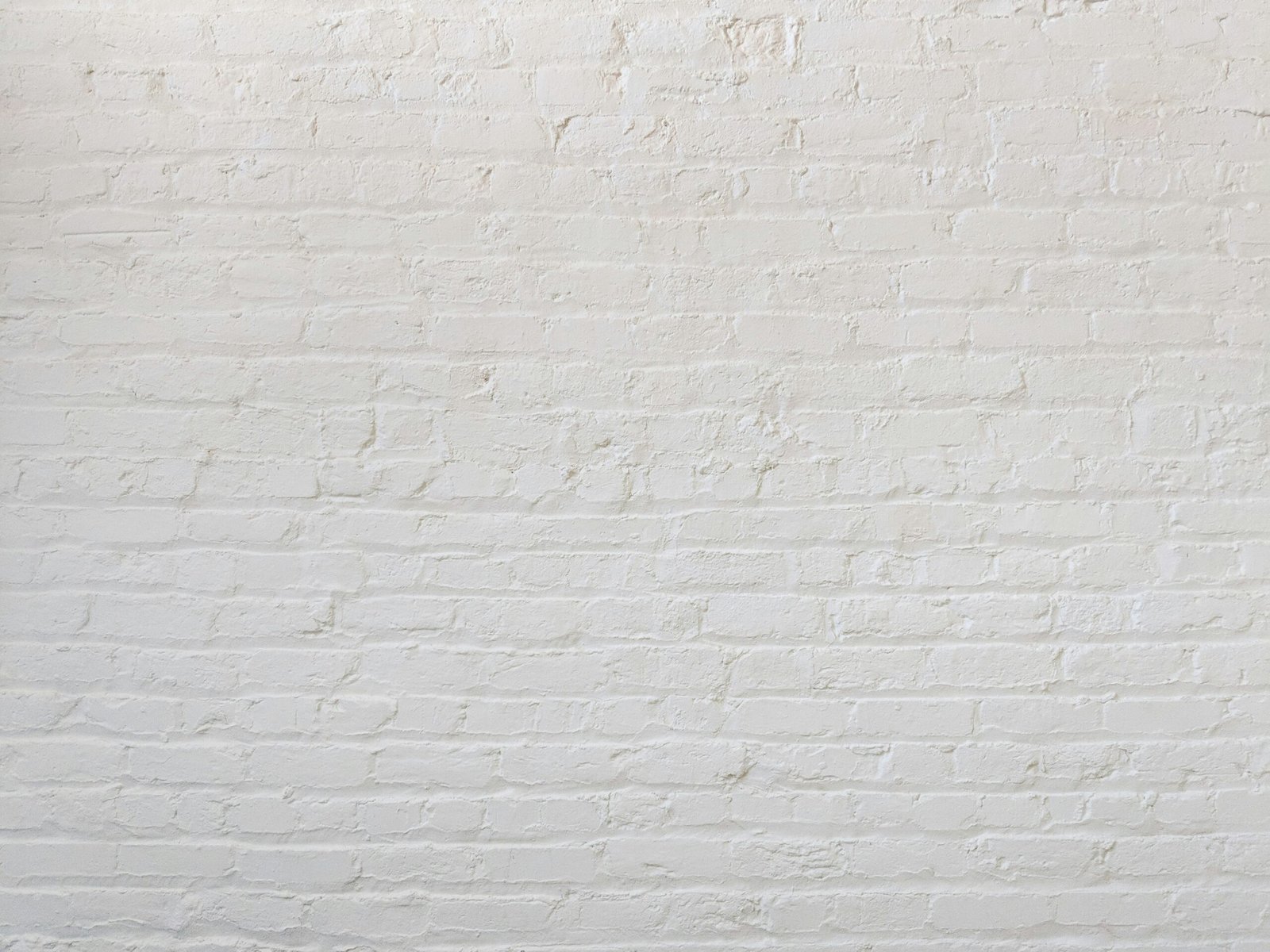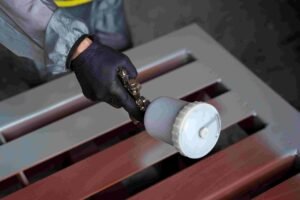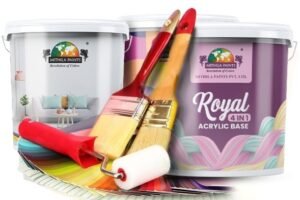
Roller vs. Sprayer for Texture Paint
Introduction to Texture Paint
Texture painting is a distinctive technique in the realm of home improvement and interior design, characterized by the application of paint in ways that create visually appealing and tactile surfaces. Unlike traditional flat painting methods, texture painting employs various tools and techniques to produce depth and dimension on walls, ceilings, and other surfaces. This approach can significantly enhance the aesthetic quality of a space, providing visual interest that can be customized to match individual tastes and styles.
The reasons homeowners and designers alike gravitate towards textured surfaces are manifold. A textured finish can effectively conceal imperfections, such as small cracks or irregularities, offering a cleaner, more polished appearance. Additionally, textured surfaces can contribute to improved acoustics within a room, as they often absorb sound, fostering a quieter environment. Furthermore, texture painting allows for greater creativity and expression, enabling individuals to curate a unique ambiance tailored to their preferences.
Texture painting is not just limited to aesthetic benefits; it can also serve functional purposes. Certain textured applications can provide added durability and resistance to wear, making them suitable for high-traffic areas of the home or spaces that are prone to moisture, such as bathrooms and kitchens. Different texture techniques, including stucco, knockdown, or sponge painting, can all create varying degrees of relief and structure, thus offering flexible design options for diverse settings.
As we delve deeper into the various methods of applying texture paint in subsequent sections, it is important to appreciate the advantages this technique brings to home improvement projects. The choice of application method—whether using a roller or a sprayer—can ultimately impact the end result, leading to discussions about the most effective approach for achieving a customized textured finish.
Types of Texture Paints
Texture paints are available in a variety of types, each offering unique properties and finishes suitable for diverse applications. Understanding these types can greatly aid in making an informed decision for your painting project. One popular category is acoustic ceiling paint, also known as popcorn ceiling texture. This type is formulated to reduce sound reverberation in a room and offers a distinctive, rough surface that can help hide imperfections in the substrate. Acoustic ceilings can be easily applied with a sprayer or roller, making them versatile for various projects.
Another widely used texture paint is the sand finish. This type incorporates sand particles into the paint, creating a coarse texture that finishes with an elegant and textured appearance. Sand finishes not only add visual interest but also provide added durability and camouflage for minor surface flaws. They work well on exterior walls or in high-traffic areas where wear and tear might occur. Coating techniques may require specialized rollers designed for thicker textures, ensuring an even application.
Knockdown textures are also popular among homeowners and professionals. This technique involves spraying a joint compound onto the surface and then lightly knocking it down with a trowel or knockdown knife, resulting in a unique, flat-textured finish. The knockdown application allows secondary color treatments, enhancing design flexibility. It is especially beneficial for creating depth in walls and ceilings while maintaining an understated elegance. The Knockdown technique is best applied with a sprayer, as it delivers a more consistent finish compared to a roller.
In summary, the choice of texture paint significantly influences the look and feel of your space. By exploring the various types available—such as acoustic ceiling paint, sand finishes, and knockdown textures—you can select the ideal option to meet both aesthetic and functional requirements for your painting project.
Introduction to Rollers in Texture Painting
When it comes to applying texture paint, the choice of tools is crucial for achieving the desired finish. Rollers specifically designed for texture applications have gained popularity among both professional painters and DIY enthusiasts due to their practical benefits. A variety of rollers exist, each tailored to different texture effects, ranging from subtle stucco to bolder knockdown finishes. The selection of the right roller is essential for obtaining the intended depth and appearance of the texture.
One of the primary advantages of using rollers in texture painting is the ease of application. Rollers allow for a uniform distribution of paint, which can significantly reduce the time and effort compared to traditional brush applications. Moreover, many texture rollers feature unique patterns and nap lengths, enabling users to create an array of finishes that can enhance the visual appeal of a wall. A roller with a longer nap, for example, can hold more paint and subsequently apply thicker texture, while a shorter nap provides a finer detail.
Control over texture depth is another benefit offered by rollers. Painters can adjust the pressure applied during the rolling process, enabling them to create either light or heavy textures depending on the project requirements. This level of control is particularly valuable when working in areas that require transitional texture or when blending different texture styles. Furthermore, the consistency achieved with rollers can make it easier to replicate textures across multiple surfaces or spaces, ensuring a cohesive look throughout the project.
In summary, rollers serve as an efficient and effective tool for applying texture paint. Their versatility and ease of use make them an excellent choice for achieving a variety of textures, allowing for creative expression in any painting project.
Introduction to Sprayers in Texture Painting
When it comes to applying texture paint, sprayers are an increasingly popular choice among homeowners and professional painters alike. This method offers unique advantages, particularly in terms of efficiency and finish. There are two primary types of sprayers utilized in texture painting: air sprayers and airless sprayers. Understanding the distinctions between these two systems is critical for making an informed decision on which is best suited for your project.
Air sprayers function through a pressurized air system that atomizes paint into small droplets. This results in a finely distributed layer of texture, making it ideal for detailed work and achieving a smooth finish. However, air sprayers can be challenging for larger surfaces, as they may require multiple passes to achieve complete coverage. Conversely, airless sprayers operate without the use of compressed air. Instead, they use a high-pressure pump to force paint through a specialized nozzle. This method allows for rapid application and is particularly effective for covering large areas efficiently.
The speed of application provided by sprayers is one of the primary benefits, particularly for extensive texture painting projects. As the paint is atomized into fine droplets, it can cover a large surface area in much less time compared to traditional roller methods. Moreover, the smoothness achieved with sprayers is often superior, minimizing the risk of visible brush marks or uneven textures. This characteristic makes sprayers especially appealing for those aiming for a professional-quality finish. Furthermore, using a sprayer can significantly reduce labor costs and time, allowing for quicker project completion while maintaining high standards of quality.
Comparative Analysis: Roller vs. Sprayer
When deciding between a roller and a sprayer for texture painting, it is essential to evaluate several critical factors, including application speed, texture finish, ease of cleanup, and the skill level required for each method. Understanding these elements will aid in making an informed decision that best suits your project requirements.
Starting with application speed, sprayers typically excel, allowing for quick coverage of large areas. This method can significantly reduce the time spent on a project, particularly for expansive surfaces. In contrast, rollers may require more time, especially when multiple coats are necessary to achieve the desired texture. However, rollers offer greater control, which can be beneficial in detailed work or when maneuvering around fixtures.
When it comes to the texture finish, each tool provides distinct results. Sprayers are ideal for achieving a fine, even texture, which may be particularly desirable for contemporary designs. The application of a sprayer allows for the uniform distribution of paint, minimizing the appearance of roller marks. On the other hand, rollers can create a textured finish with a bit more character, suited for rustic or traditional aesthetic preferences.
Ease of cleanup is another crucial factor to consider. Cleaning a sprayer can be more time-consuming, as it often involves disassembling various components and thorough washing of the spray nozzle and cup. Rollers, while still needing care, are generally simpler to clean, requiring only the washing of the roller cover and tray. This ease of cleanup can affect overall project efficiency, especially in larger tasks.
Lastly, the skill level required varies significantly. While rollers are user-friendly and can be utilized by most individuals, spray painting demands a certain level of proficiency. Successful operation of a sprayer entails practice, understanding of spray patterns, and the ability to manage paint flow. Consequently, novice painters may find rollers to be a more approachable option, while experienced individuals may prefer the sprayer for its speed and finish.
Cost Considerations and Budgeting
When contemplating the application of texture paint, an essential element to consider is the associated costs of using rollers versus sprayers. Both methods present distinct financial implications that can significantly affect your overall budget, and understanding these can help in making an informed decision.
Starting with the initial investment, rollers typically require a lower upfront cost. A standard paint roller kit, which includes the roller cover, tray, and handle, can range from $15 to $50. In contrast, texture sprayers can be considerably more expensive, with prices commonly starting around $100 for a basic model and can reach upwards of $1,000 for more advanced equipment. Thus, for projects where budget constraints are paramount, rollers may emerge as the more economical choice.
In addition to the tools, it is also crucial to consider the price of texture paint itself. While the cost per gallon may remain relatively consistent regardless of application method, the amount required can vary. Rollers generally use more paint due to their application technique, which may necessitate the purchase of extra gallons for coverage. On the other hand, sprayers offer a more efficient application, potentially allowing for less paint use and cost savings in this regard.
Furthermore, hiring professionals for texture application can also play a significant role in your budgeting process. For roller applications, labor costs typically range from $20 to $50 per hour, depending on the complexity of the project. In contrast, specialized sprayer services may incur higher charges due to the equipment and expertise required. Therefore, evaluating whether to DIY or hire professionals also hinges closely on these cost factors.
Ultimately, it is essential to conduct a thorough cost analysis tailored to your specific project requirements and financial parameters, ensuring that you make a well-informed decision about the application method that aligns with your budget.
Ideal Situations for Rollers
When deciding between tools for texture painting, rollers present unique advantages in certain scenarios. One of the primary benefits of using rollers is their efficiency, particularly in small projects. For instance, when painting a single accent wall or a smaller room, rollers enable users to cover large areas quickly, permitting a more uniform texture finish. The speed and broad coverage make them ideal for DIY enthusiasts looking to achieve a satisfying result without extensive effort.
Moreover, rollers are instrumental when dealing with intricate details or textured surfaces. While sprayers may struggle with ensuring even coverage on complex patterns, rollers provide precise control in applying texture paint to each nook and cranny. This is particularly useful when working on surfaces that require careful application, such as textured ceilings or patterned walls. The operator can easily manage the amount of paint applied, minimizing the risk of overspray.
Additionally, rollers are particularly beneficial in tight spaces. For example, areas like corners, narrow hallways, or smaller rooms can pose challenges when using larger painting equipment. In these situations, a roller provides better maneuverability, allowing painters to work efficiently without cumbersome equipment. Its compact design coupled with specialized roller covers designed for textures ensures that users can achieve the desired finish in even the most confined locations.
Furthermore, the cleanup process associated with rollers is generally more straightforward than that of sprayers. This aspect can be a significant consideration for projects wherein limited time is available for post-painting actions. Thus, for those projects that require precision and efficiency in smaller or intricate settings, a roller might be the most suitable choice to achieve the best texture painting outcome.

Ideal Situations for Sprayers
When contemplating the best method for applying texture paint, understanding the ideal situations for using sprayers is essential. One of the primary contexts in which sprayers excel is during larger projects. In expansive areas, such as commercial spaces, large living rooms, or wide exterior surfaces, using a sprayer can significantly reduce the time required for application. The ability to cover vast areas rapidly makes sprayers particularly advantageous for contractors and homeowners aiming to complete a job efficiently.
Moreover, sprayers are exceptionally beneficial when working with high ceilings or intricate architectural details. Traditional tools, such as rollers, may struggle to reach elevated spaces without significant effort. In contrast, a sprayer allows for effortless elevation adjustments, ensuring that even the most challenging spots receive a consistent coat of texture paint. This accessibility not only enhances the overall finish but also minimizes the risk of missing sections that could detract from the visual appeal of the project.
Additionally, situations where a quicker application is necessary further justify the use of sprayers. For example, emergency repairs, renovation projects with tight deadlines, or even quick updates before hosting an event can find sprayers to be the perfect solution. Their efficiency allows for both swift application and drying, enabling spaces to be usable sooner rather than later. In essence, if the project demands speed and has specific architectural challenges, opting for a sprayer often becomes the optimal choice.
In summary, situations characterized by expansive areas, high ceilings, or pressing timelines heavily favor the use of sprayers for texture painting. Understanding these contexts will facilitate a more informed decision when selecting the right tools for your painting endeavors.

Conclusion: Making the Right Choice
In the debate between using a roller or a sprayer for texture painting projects, several key factors must be taken into account to determine which method aligns best with your needs. Both the roller and the sprayer have their unique advantages and ideal applications. Rollers are known for their ease of use, allowing for a more controlled application, making them suitable for smaller projects or areas that require precise texture placement. They also tend to produce less mess, which can be a significant consideration for those who value cleanliness during their painting endeavors.
On the other hand, sprayers offer an efficient solution for larger projects where speed and coverage are of the essence. They can quickly cover expansive surfaces with an even coat, making them particularly advantageous for texture painting on ceilings or walls in larger rooms. However, they require a degree of skill to operate effectively, and the potential for overspray may necessitate additional preparation and cleanup time.
When making a decision, it is essential to reflect on the size of your project, your budget, and your personal application style. For those who prioritize speed and efficiency on larger surfaces, investing in a sprayer may be the best solution. Conversely, if precision and control are your main criteria, utilizing a roller may serve your project better. In view of these considerations, weighing the pros and cons of each method can facilitate an informed decision tailored to your specific texture painting requirements. The best choice ultimately depends on how these factors come together in the context of your unique project.




Leave a Reply